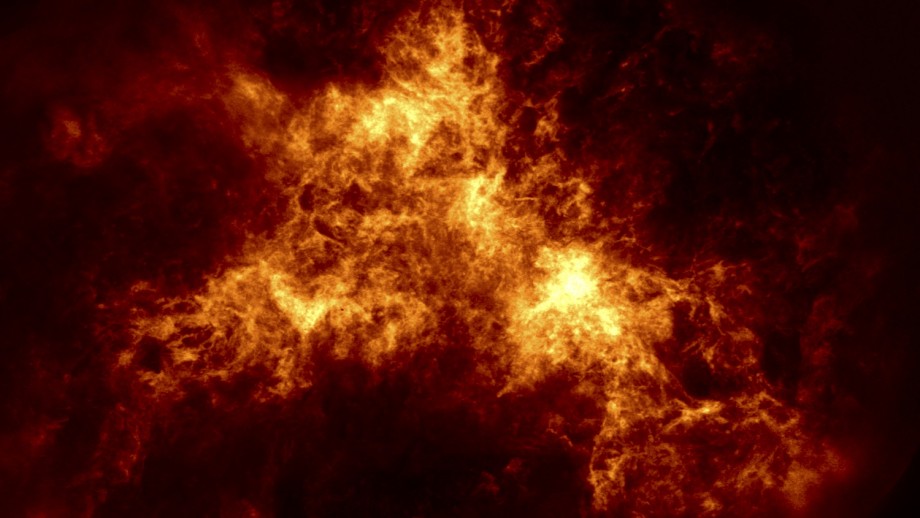Astronomers create most detailed radio image of nearby dwarf galaxy

Astronomers at The Australian National University (ANU) have created the most detailed radio image of nearby dwarf galaxy, the Small Magellanic Cloud, revealing secrets of how it formed and how it is likely to evolve.
The Small Magellanic Cloud, which is a tiny fraction of the size and mass of the Milky Way, is one of our nearest galactic neighbours and visible to the naked eye in the southern sky.
Co-lead researcher Professor Naomi McClure-Griffiths said the complex structure of the dwarf galaxy likely resulted, in part, from interactions with its companion, the Large Magellanic Cloud, and the Milky Way.
“The new image captured by CSIRO’s new Australian Square Kilometre Array Pathfinder radio telescope reveals more gas around the edges of the galaxy, indicating a very dynamic past for the Small Magellanic Cloud,” said Professor McClure-Griffiths from the ANU Research School of Astronomy and Astrophysics.
“These features are more than three times smaller than we were able to see before and allow us to probe the detailed interaction of the small galaxy and its environment.”
The new image (see attached) was created as part of a survey that aims to study the evolution of galaxies.
Professor McClure-Griffiths said distortions to the Small Magellanic Cloud occurred because of its interactions with the larger galaxies and because of its own star explosions that push gas out of the galaxy.
“The outlook for this dwarf galaxy is not good, as it’s likely to eventually be gobbled up by our Milky Way,” she said.
“Together, the Magellanic Clouds are characterised by their distorted structures, a bridge of material that connects them, and an enormous stream of hydrogen gas that trails behind their orbit – a bit like a comet.”
The Small Magellanic Cloud has been studied extensively in the past few years by infrared telescopes such as NASA’s Spitzer Space Telscope and ESA’s Herschel telescope, which study the dust and stars within the galaxy.
“The new radio image finally reaches the same level of detail as those infrared images, but on a very different component of the galaxy’s make-up: its hydrogen gas,” Professor McClure-Griffiths said.
“Hydrogen is the fundamental building block of all galaxies and shows off the more extended structure of a galaxy than its stars and dust.”
